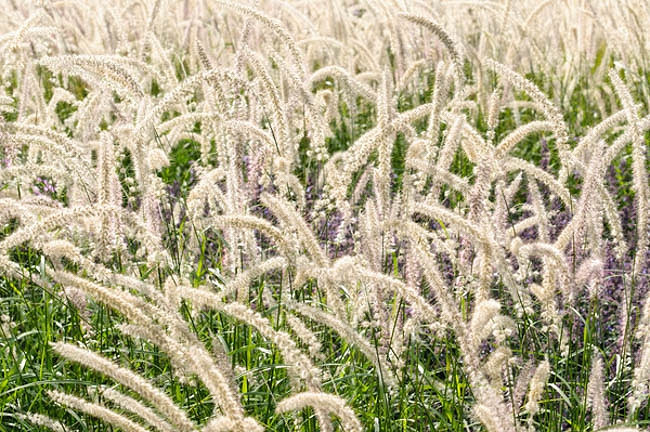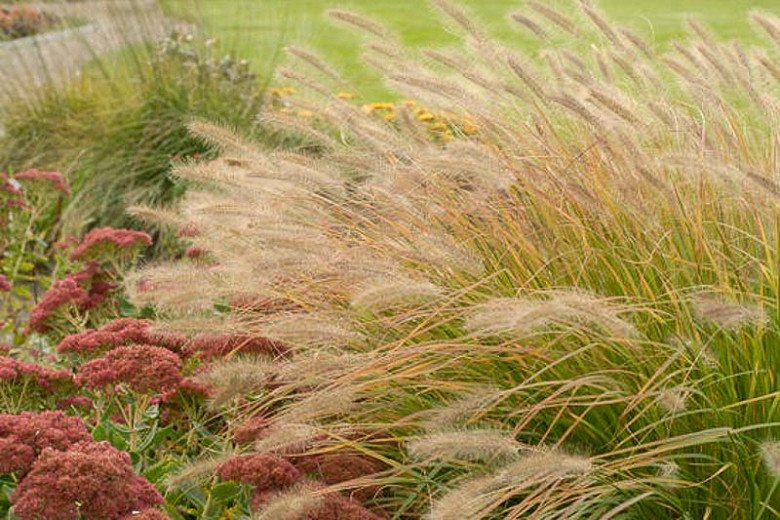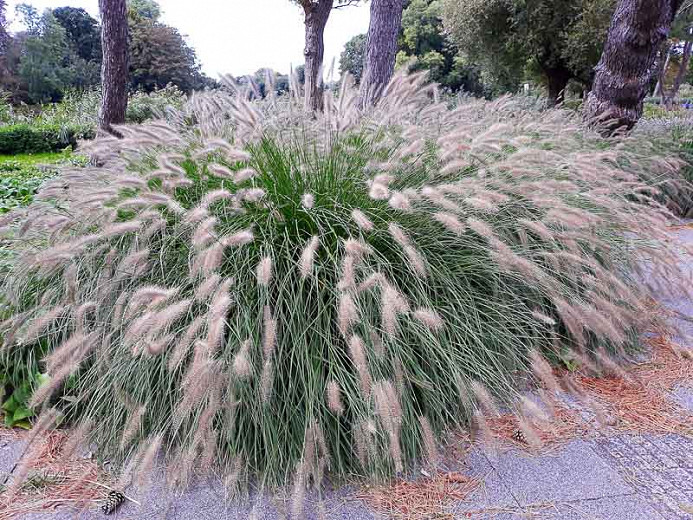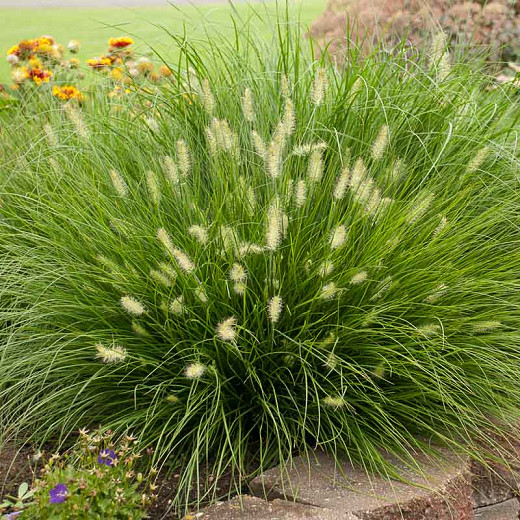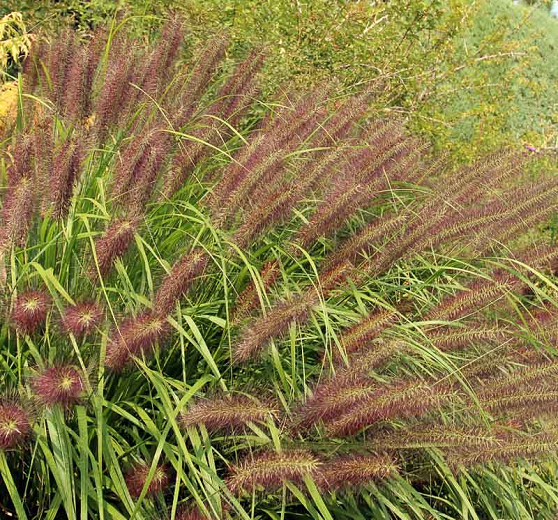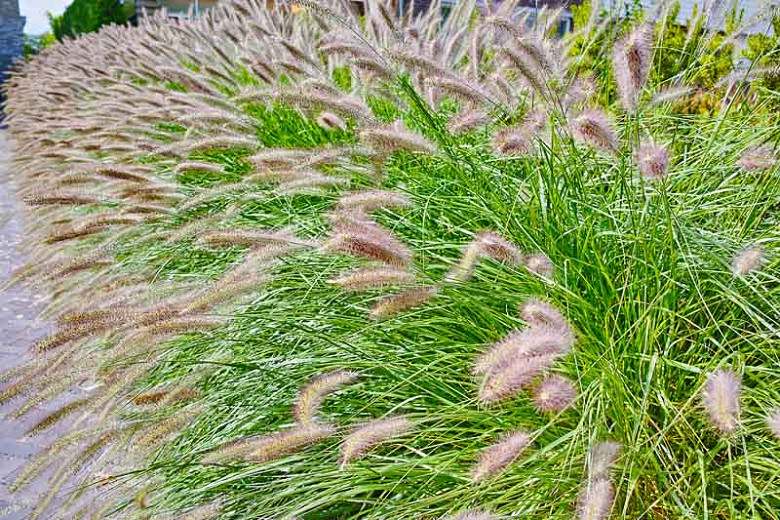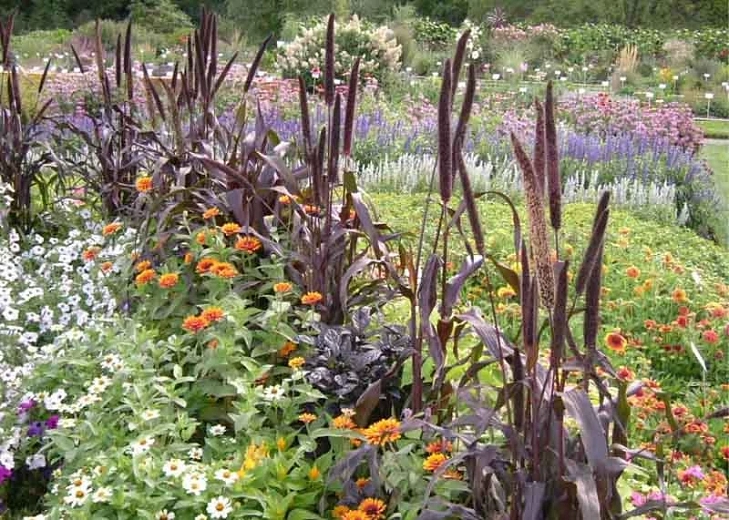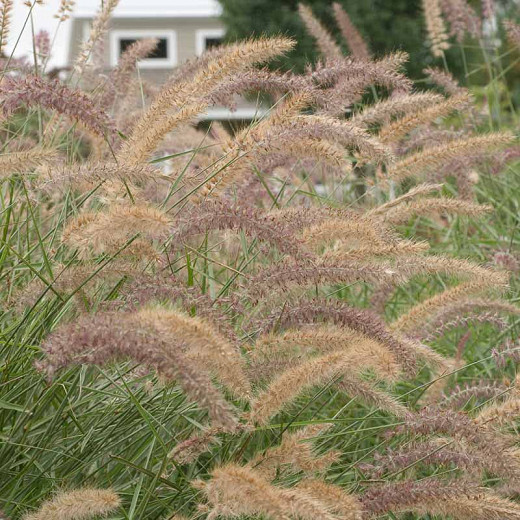Pennisetum orientale (Oriental Fountain Grass)
Low-growing, compact and incredibly floriferous, Pennisetum orientale (Oriental Fountain Grass) is a clump-forming tufted perennial grass and one of the most striking hardy fountain grasses. Blooming over an exceptionally long season, its fluffy flower spikes rise high above the foliage, arching upward or outward, and cascading down the deep green to gray-green foliage that rustles in the wind. Resembling bottle brushes, the flower spikes consist of soft, pinkish spikelets that are formed in long, narrow panicles, about 4-5 in. long (10-13 cm). They sway in the breeze and literally glow when lit from behind in early morning or late afternoon sun. Over time, those pink panicles mature to a light brown. The foliage turns straw-colored in the fall and generally remains attractive, well into the winter.
- Typically forms a densely tufted mound, up to 2 ft. tall and wide (60 cm), of narrow green foliage, topped with soft, furry, bottlebrush-like flowers from early summer until fall.
- Winner of the prestigious Award of Garden Merit of the Royal Horticultural Society.
- Welcomed in any garden style, it is versatile and can be used as a specimen plant, in groups or en masse. It is ideal in borders where it provides texture, color and contrast. Great choice for containers, small gardens or rock gardens. Flowers are excellent for cutting, in fresh or dried arrangements.
- Performs best in full sun, in average, medium moisture, well-drained soils. Tolerates part shade, but flowering will not be as colorful. Sandy loams with good drainage are preferred. Drought and deer resistant!
- Cut back old foliage to the ground in late winter.
- It may be propagated by seed or by dividing the root mass, which widens each year and usually eventually requires some division. If the plant needs to be divided, do so in early spring just as the new growth begins to reappear. When planting P. orientale, make sure the crown is not planted below the soil’s surface for this will cause it to rot in the center.
- Native to central and southwestern Asia to northwestern India
Requirements
| Hardiness | 6 – 10 |
|---|---|
| Heat Zones | 4 – 10 |
| Climate Zones | 3A, 3B, 4, 5, 6, 7, 8, 9, 10, 14, 15, 16, 17, 18, 19, 20, 21, 22, 23, 24 |
| Plant Type | Ornamental Grasses |
| Plant Family | Pennisetum – Fountain Grasses |
| Exposure | Full Sun |
| Season of Interest | Summer (Early,Mid,Late)FallWinter |
| Height | 1' – 2' (30cm – 60cm) |
| Spread | 1' – 2' (30cm – 60cm) |
| Spacing | 18″ – 24″ (45cm – 60cm) |
| Water Needs | Average |
| Maintenance | Low |
| Soil Type | Chalk, Loam, Sand |
| Soil pH | Acid, Alkaline, Neutral |
| Soil Drainage | Moist but Well-Drained, Well-Drained |
| Characteristics | Dried Arrangements, Cut Flowers, Plant of Merit, Showy |
| Tolerance | Deer, Drought |
| Attracts | Birds |
| Garden Uses | Beds and Borders, Patio and Containers |
| Garden Styles | City and Courtyard, Gravel and Rock Garden, Modern Garden, Prairie and Meadow |
